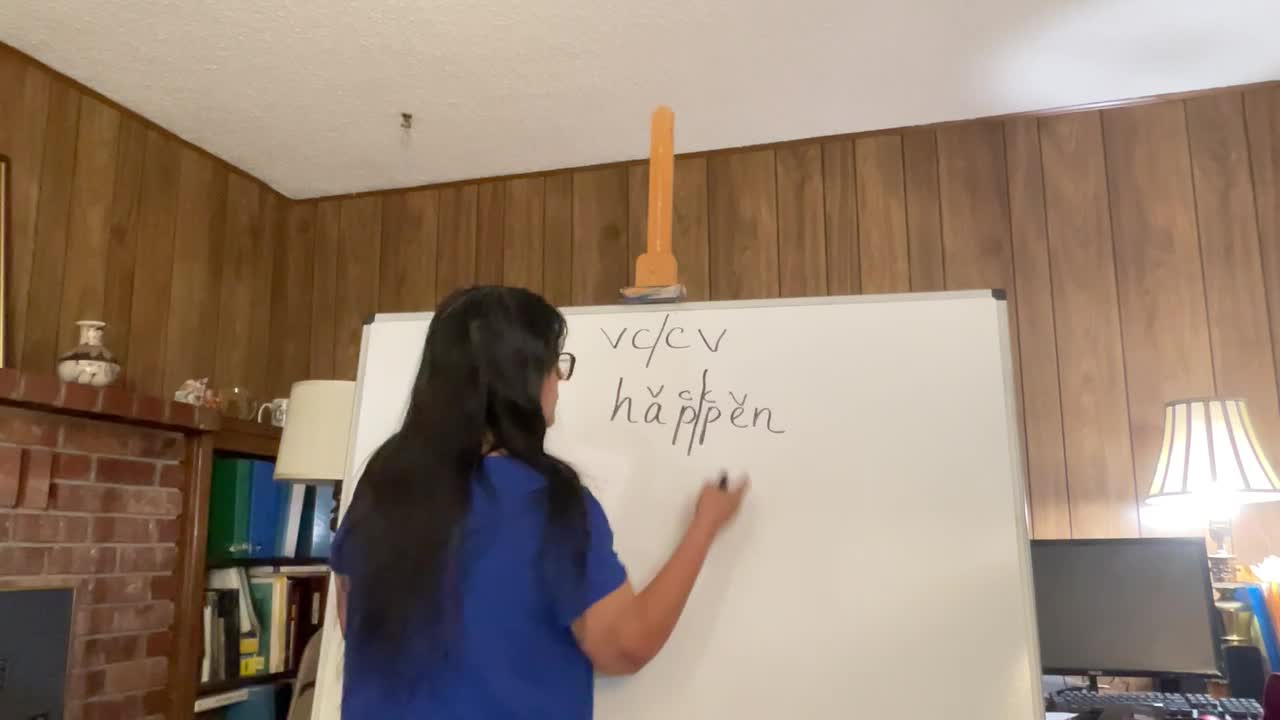Premium Only Content

Lesson 17 - Syllabication Rules
SPELLING/SYLLIBICATION RULES
When teaching the student how to read, it is important for them to keep their own notebook with all the phonemes and spelling and syllabication rules that they learn. The teacher/parent should carefully go through each phoneme one at a time saying the sound or sounds first and then having the student repeat the sound/s and write them neatly in their book, in a manner as presented in this book. Where it is difficult for them to understand the written letter, use clay to form the letters or have the student follow the shape of a magnetic letter with their finger then have them say the sound before attempting to write it. Once the phoneme is introduced, it should be drilled every day. All the phonetics sounds should be introduced in kindergarten, and then repeated through the fourth to fifth grade adding spelling and syllabication rules. Some methods do not have students use key words to learn their phonemes. I personally have used both methods and have mixed them. Each student is unique and I would therefore recommend that the teacher/parents discern the method or methods which work best for the student. It is very important for the teacher to try to pronounce single consonant letters as pure as possible. This will help to not cause any confusion to the student. For example do not add ‘ŭ’ to the end of consonants as in ‘bŭ’. It is better to say ‘bĭ’. Using the short letter ‘i’ sound has been found to be the best in preventing misspellings such as spelling boy - buoy. The following are some of the references I have used to help me with my booklet and method of teaching. The Blue book Method by Kathleen M. Dwyer,M.ED The ABC’s and All Their Tricks by Margaret M.Bishop Solving Language Difficulties by Amey Steere, Caroline Z. Peck and Linda Kahn Writing Road to Reading by Ramalda Spaulding A Measuring Scale for Ability In Spelling by Leonard Porter Ayers There are many more, but these are the ones I like the best.
Kinds of Syllables
1. Consonant ‘le’ is always a separate syllable. It sounds like (ull) in full. The ‘e’ is silent: table, uncle
2.r-combination Makes vowels say a different sound – not long or short: courageous, thirsty, worms, hurry, under, earth, color, car, for
3.Closed (vc) Ends with a consonant, has one vowel which is usually short: cat, bend, fin, lot. Sometimes long: find, cold
4.Open (cv) Ends in one vowel- vowel is usually long: ba by, be, spi der, po ny, mu sic
5.Silent ‘e’ (vce) ‘e’ on the end is silent. Usually makes the first vowel long: sāfe, thēse, pīne, hōme, mūle
6.Diphthong (vv) two vowels equal one sound. The first vowel is often long. ‘y’ and ‘w’ form diphthongs in: awful, few, owl, snow, day, they, valley, boy
Syllabication/ Division Rules
I. A one syllable word must never be divided. Examples: cross, heart
2. Divide a compound word between the words that make the Compound.
Examples: rain/bow, flash/light, foot/ball
3.Vowel consonant/consonant vowel
vc/cv
Description: When two or more consonants stand between two vowels, divide between the consonants, unless they are consonant blends or diphthongs. Example: hap/pen, hun/dred
4.Vowel consonant/vowel
v/cv
Description: When a single consonant comes between two vowels, the most common division is before the consonant, making the vowel in the first syllable long. Example: spi/der, mu/sic
5.Vowel consonant/vowel
vc/v
Description: When a single consonant comes between two vowels it is usually divided after the consonant if the vowel is short.
Example: cab/in, grav/el*-+
6.Consonant/le/
Count back three letters from the end of the word and divide the C/le syllable. Example: hus/tle, cra/dle, un/cle
7.Vowel/vowel
v/v
When they are sounded separately in a word divide between the vowels. Example: po/em, bi/as
8.Remember that a prefix (pre means before) is a syllable that is added to the beginning of a root word to form a new word. Divide between the prefix and the root.
Example: unpack, dislike, return
9. Divide a word with a suffix (an addition added to the end of a word to form a new word) between the root word and the suffix.
Example: want/ed, go/ing, kind/ness
-
 2:43:07
2:43:07
RG_GerkClan
3 hours agoLIVE: Lets Get to 500 FOLLOWS! - Escape From Tarkov - Gerk Clan
4.32K1 -
 LIVE
LIVE
Vigilant News Network
17 hours agoHillary Clinton EXPOSED In Another Massive Hoax | The Daily Dose
2,393 watching -
 1:00:17
1:00:17
Trumpet Daily
23 hours ago $5.10 earnedRINOs Are Trump’s Biggest Enemy Now - Trumpet Daily | Nov. 22, 2024
3.32K16 -
 17:47
17:47
RealReaper
12 hours ago $0.02 earnedGladiator 2 Another Pointless Sequel
1131 -
 45:45
45:45
PMG
10 hours ago"Hannah Faulkner and Stephanie Nash | No Farms No Food"
166 -
 27:11
27:11
Degenerate Plays
1 day agoReturn Of The Online Girlfriends - Stellar Blade : Part 30
71 -
 7:16
7:16
SeasonofMist
2 days agoSOLSTAFIR - Fjara (Official Music Video)
282 -
 3:54
3:54
Good Kid Productions
9 days agoTrump just broke legacy media. We're building something better.
300 -
 3:13:17
3:13:17
Boxin
4 hours ago(Rumble push to 50 Followers!) (alerts Working...?) Spoopy Month!!!! Resident Evil 7 Biohazard 4
67K2 -
 2:26:35
2:26:35
Father Russell
4 hours agoThrone and Liberty | Morning Stream
38.5K1